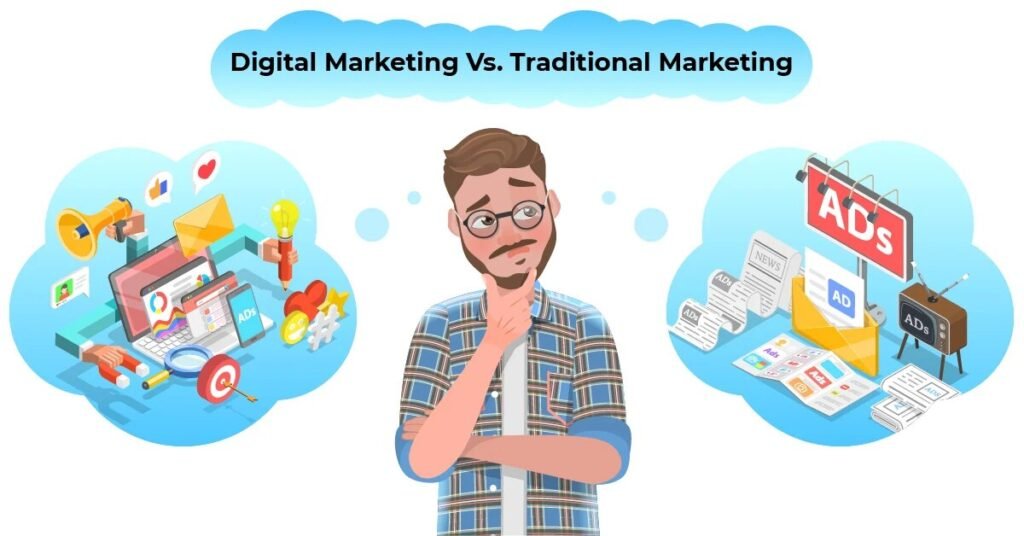In the ever-evolving world of marketing, standing out from the crowd is essential. Traditional methods are becoming less effective, making it crucial to think outside the box. One innovative approach is using creative drop-offs in your marketing campaigns. These personalized, unexpected deliveries can leave a lasting impression and create a strong connection with your audience. Let’s dive into some creative ideas and strategies to make your next marketing campaign unforgettable.
Understanding the Power of Drop-Off Marketing
Why Drop-Off Marketing Works
Drop-off marketing is powerful because it surprises and delights the recipient. Unlike digital ads or emails, a physical item creates a tangible experience.
This sensory engagement makes the recipient feel valued and special, increasing the chances of a positive response and brand recall.
Personalization is Key
One of the main strengths of drop-off marketing is its ability to be highly personalized. By tailoring the drop-off to the recipient’s preferences or needs, you can create a memorable experience.
Personalization shows that you’ve put thought and effort into the interaction, which can significantly boost brand loyalty.
Crafting the Perfect Drop-Off Experience
Know Your Audience
Before you start planning your drop-off campaign, you need to understand your audience. What are their interests, preferences, and pain points? This knowledge will help you create a drop-off that resonates with them.
Conduct surveys, analyze social media activity, and use data analytics to gather insights about your target audience.
Create a Unique Concept
Your drop-off should have a unique concept that aligns with your brand and campaign goals. Think about how you can surprise your audience in a way that feels authentic and exciting.
For example, if you’re promoting a new product, your drop-off could include a sample or a related item that enhances the main product.
Design with Care
The design of your drop-off package is crucial. It should be visually appealing and reflect your brand’s identity.
Use high-quality materials and ensure that every element, from the packaging to the contents, is well-designed and thoughtfully curated. A beautifully designed package can create a sense of anticipation and excitement.
Add a Personal Touch
Adding a personal touch to your drop-off can make a big difference. Handwritten notes, customized messages, or personalized items can make the recipient feel special.
This personal touch can enhance the emotional connection between your brand and the recipient.
Timing is Everything
The timing of your drop-off can greatly impact its effectiveness. Consider the recipient’s schedule and choose a time when they are likely to be receptive.
For example, delivering a package just before a major holiday or event can add an element of surprise and delight.
Creative Drop-Off Ideas
Themed Gift Boxes
Creating themed gift boxes is a great way to make your drop-off memorable. Choose a theme that aligns with your campaign and fill the box with related items.
For example, if you’re running a wellness campaign, your gift box could include items like essential oils, a yoga mat, and a healthy snack.
Product Samples with a Twist
Product samples are a common drop-off item, but you can make them more exciting by adding a twist. For example, you could include a DIY kit that allows the recipient to create something using your product.
This interactive element can make the experience more engaging and memorable.
Experience-Based Drop-Offs
Experience-based drop-offs can create a lasting impression. Instead of sending a physical item, consider offering an experience that the recipient can enjoy.
This could be a ticket to an exclusive event, a virtual workshop, or a personalized service. Experiences can create strong emotional connections and positive associations with your brand.
Collaborate with Influencers
Collaborating with influencers can amplify the impact of your drop-off campaign. Choose influencers who align with your brand and have a strong connection with your target audience.
Sending a personalized drop-off to an influencer can generate buzz and reach a wider audience through their social media channels.
Creating Memorable Drop-Off Campaigns

Storytelling Through Drop-Offs
Storytelling is a powerful marketing tool that can be effectively used in drop-off campaigns. Craft a compelling story that ties into your brand’s message and the purpose of the drop-off.
For example, if you’re launching an eco-friendly product, your drop-off could tell the story of sustainability and how your product contributes to a greener planet. Include elements that make the story come to life, such as a booklet or a video link.
Gamify the Experience
Adding a gamification element to your drop-off can make it more engaging and fun. Create a challenge or a game that the recipient can participate in using the items in the drop-off.
For instance, a puzzle or a scavenger hunt can encourage interaction and create a memorable experience. This can also increase social media engagement as recipients share their progress and completion.
Seasonal and Holiday Themes
Leveraging seasonal and holiday themes can make your drop-off more relevant and timely. For example, a winter-themed drop-off could include cozy items like a branded blanket, hot cocoa mix, and a holiday card.
Seasonal themes create a sense of occasion and can make your campaign feel more special and thoughtful.
Partner with Local Businesses
Partnering with local businesses can add a unique touch to your drop-off campaign while supporting the community. Include products or vouchers from local businesses that complement your brand.
This not only enhances the drop-off but also builds goodwill and community relations.
Incorporate Technology
Incorporating technology can elevate your drop-off experience. Use augmented reality (AR) or virtual reality (VR) to create an interactive element.
For example, a QR code could lead to an AR experience that tells the story of your brand or demonstrates how to use the product. This adds a modern and innovative twist to traditional drop-off campaigns.
Practical Tips for Executing a Drop-Off Campaign
Budget Planning
Effective budget planning is crucial for the success of your drop-off campaign. Consider all costs, including design, production, packaging, shipping, and any associated marketing expenses.
It’s important to balance cost with the perceived value of the drop-off to ensure a positive ROI.
Logistics and Delivery
Managing logistics and delivery is a critical aspect of drop-off campaigns. Choose a reliable delivery partner to ensure that your packages arrive on time and in good condition.
Consider the packaging materials and design to protect the contents during transit and create a positive unboxing experience.
Legal and Ethical Considerations
Ensure that your drop-off campaign complies with all relevant legal and ethical guidelines. This includes obtaining necessary permissions for using personal data, adhering to advertising standards, and ensuring that the contents of the drop-off are safe and appropriate for the recipient.
Follow-Up Strategy
A follow-up strategy is essential to maximize the impact of your drop-off campaign. Send a follow-up email or message to thank the recipient and encourage feedback.
This can also be an opportunity to provide additional information about your brand or offer a special promotion.
Advanced Strategies for Creative Drop-Off Campaigns
Exclusive Previews and Early Access
Offering exclusive previews or early access to new products or services can make your drop-off campaign feel special and VIP-like. Include a personalized invitation to a pre-launch event or a sneak peek at a new product.
This not only builds excitement but also makes the recipients feel like valued insiders.
Incorporating Sustainability
Sustainability is an increasingly important consideration for consumers. Design your drop-off campaign with eco-friendly materials and practices.
Use recyclable or biodegradable packaging, and include information about your brand’s sustainability efforts. This can resonate with environmentally conscious consumers and enhance your brand’s reputation.
Interactive Elements
Adding interactive elements to your drop-off can significantly increase engagement. For example, include a DIY kit that allows the recipient to create something using your product. This hands-on experience can be more memorable and enjoyable.
Additionally, interactive elements can encourage recipients to share their creations on social media, increasing your campaign’s reach.
Multi-Phase Drop-Offs
Consider creating a multi-phase drop-off campaign to maintain engagement over a longer period. Start with a teaser package that piques the recipient’s curiosity, followed by the main drop-off, and then a follow-up package.
This staggered approach can build anticipation and keep your brand top of mind.
Charity Tie-Ins
Incorporating a charitable aspect into your drop-off campaign can create a positive impact and resonate with recipients.
For example, include a note that a donation has been made to a charity on their behalf, or provide an item that supports a good cause. This can enhance your brand’s image and appeal to socially conscious consumers.
Examples of Creative Drop-Off Campaigns

Nike’s Personalized Sneakers
Nike has used personalized drop-offs to create a buzz around new product launches. They send customized sneakers to influencers and key customers, with personalized messages and unique designs.
This not only showcases the product but also makes the recipients feel special and valued.
Lush’s Eco-Friendly Packages
Lush, known for its commitment to sustainability, has successfully used eco-friendly drop-offs. They send out packages made from recyclable materials, filled with their latest products and information about their sustainability initiatives.
This approach aligns with their brand values and appeals to their eco-conscious audience.
Apple’s Influencer Kits
Apple often uses drop-off campaigns to generate excitement around new product launches. They send out beautifully packaged influencer kits that include the latest devices and accessories.
The unboxing experience is meticulously designed to create a sense of luxury and exclusivity, encouraging influencers to share their experience online.
Creating a Lasting Impact
Focus on Emotional Connection
To create a lasting impact, focus on building an emotional connection with the recipient. Personalize the drop-off to reflect their preferences and interests. Share the story behind your brand and why the drop-off is meaningful.
This emotional connection can lead to stronger brand loyalty and advocacy.
Encourage Social Sharing
Encouraging recipients to share their drop-off experience on social media can amplify your campaign’s reach. Include a branded hashtag, and create a call-to-action that prompts recipients to post photos or videos.
Offer incentives, such as a chance to win a prize, to motivate social sharing.
Provide Value
Ensure that your drop-off provides real value to the recipient. This could be in the form of useful products, exclusive content, or valuable information.
When recipients feel that they have gained something of worth, they are more likely to have a positive perception of your brand.
Continuously Innovate
The world of marketing is constantly evolving, and it’s important to keep innovating. Stay updated with the latest trends and technologies, and be open to experimenting with new ideas.
Continuous innovation can help you stay ahead of the competition and keep your drop-off campaigns fresh and exciting.
Tips for Enhancing Your Drop-Off Campaign
Use High-Quality Materials
Invest in high-quality materials for your drop-off packages. This can enhance the perceived value of the package and create a positive impression.
High-quality materials also ensure that the items inside are well-protected during transit.
Personalize Thoughtfully
Thoughtful personalization can significantly enhance the recipient’s experience. Use data to tailor the drop-off to the recipient’s preferences and interests.
Personal touches, such as handwritten notes or customized items, can make the recipient feel special and appreciated.
Create a Shareable Experience
Design your drop-off packages to be shareable on social media. Use attractive packaging and include elements that encourage recipients to take photos or videos.
Provide a branded hashtag and a call-to-action to motivate social sharing.
Follow Up with Recipients
A follow-up can reinforce the impact of your drop-off campaign. Send a thank-you email or message to the recipients and encourage them to provide feedback.
This can also be an opportunity to offer a special promotion or additional information about your brand.
Case Studies: Successful Drop-Off Campaigns
Airbnb’s Customized Welcome Kits
Airbnb has successfully used drop-off campaigns to create a personalized experience for hosts. They send out customized welcome kits that include items like branded notebooks, local snacks, and a guidebook.
This not only makes hosts feel appreciated but also strengthens their connection with the Airbnb brand.
Coca-Cola’s Share a Coke Campaign
Coca-Cola’s “Share a Coke” campaign is a classic example of effective drop-off marketing. By personalizing Coke bottles with popular names and distributing them, Coca-Cola created a buzz and encouraged people to share their personalized bottles on social media.
This campaign significantly boosted brand engagement and sales.
Glossier’s Influencer Packages
Beauty brand Glossier has leveraged influencer partnerships for their drop-off campaigns.
They send out beautifully packaged boxes with their latest products to influencers, who then share unboxing videos and reviews with their followers. This strategy has helped Glossier build a strong presence on social media and attract a loyal customer base.
Comparing Drop-Off Marketing with Other Marketing Strategies

Traditional Advertising vs. Drop-Off Marketing
Reach and Engagement
Traditional advertising, such as TV commercials and print ads, has a broad reach but often struggles with engagement. Many consumers tune out or skip ads, making it hard to capture their attention.
In contrast, drop-off marketing creates a more personalized and engaging experience. By delivering a tangible item directly to the recipient, you can capture their full attention and create a memorable interaction.
Personalization
Drop-off marketing excels in personalization. Each package can be tailored to the recipient’s preferences, making them feel valued and special.
Traditional advertising, on the other hand, is typically one-size-fits-all, making it less effective at creating a personal connection.
Cost-Effectiveness
While traditional advertising can be expensive, drop-off marketing allows for more control over costs. You can scale your campaign based on your budget, targeting a specific group of high-value customers or influencers.
This targeted approach can result in a higher ROI compared to the broad and often costly reach of traditional ads.
Digital Marketing vs. Drop-Off Marketing
Digital Saturation
Digital marketing channels, such as email, social media, and online ads, are often saturated. Consumers are bombarded with digital messages daily, leading to ad fatigue.
Drop-off marketing cuts through this digital noise by providing a unique, physical experience that stands out.
Tangibility and Memorability
One of the biggest advantages of drop-off marketing over digital marketing is tangibility. A physical item creates a sensory experience that digital channels cannot replicate.
This tangibility enhances memorability, making it more likely that the recipient will remember your brand and message.
Integration Potential
Drop-off marketing can complement digital marketing efforts. For example, a drop-off package can include a QR code that leads to a personalized landing page or social media campaign.
This integration creates a seamless experience that bridges the physical and digital worlds.
Event Marketing vs. Drop-Off Marketing
Audience Engagement
Event marketing engages audiences through live interactions and experiences. While this is highly effective, it can be limited by location and time.
Drop-off marketing extends the reach of event marketing by bringing the experience directly to the recipient, regardless of their location.
Scalability
Event marketing can be logistically complex and expensive to scale. Drop-off marketing offers a more scalable solution, allowing you to reach a larger audience with less logistical overhead.
You can design and distribute packages on a smaller budget while maintaining a high level of engagement.
Flexibility
Drop-off marketing is highly flexible and can be tailored to various campaign goals. Whether you’re launching a new product, rewarding loyal customers, or creating brand awareness, drop-off packages can be customized to meet your specific needs.
Event marketing, while effective, often requires significant planning and resources for each individual event.
Content Marketing vs. Drop-Off Marketing
Content Saturation
Similar to digital marketing, content marketing faces saturation issues. With so much content available online, it’s challenging to stand out.
Drop-off marketing offers a unique way to complement content marketing by providing a physical touchpoint that can drive engagement with your digital content.
Engagement and Interaction
Content marketing relies on creating valuable and engaging content to attract and retain an audience. Drop-off marketing can enhance this strategy by offering a tangible item that ties into your content.
For example, a branded journal sent as a drop-off can encourage recipients to engage with your blog or video series about productivity and organization.
Personal Connection
While content marketing can build a personal connection through storytelling and valuable information, drop-off marketing deepens this connection through physical interaction.
A well-designed drop-off package can evoke emotions and create a sense of appreciation that digital content alone may not achieve.
Best Practices for Combining Drop-Off Marketing with Other Strategies
Integrate with Digital Campaigns
Combine drop-off marketing with your digital campaigns for a cohesive approach. Use digital channels to promote the anticipation of the drop-off and encourage recipients to share their experience online.
This can create a buzz and extend the reach of your campaign.
Use Data for Personalization
Leverage data from your digital marketing efforts to personalize your drop-off campaigns. Insights from customer interactions, preferences, and purchase history can help you create more relevant and impactful packages.
Follow Up with Content
After a drop-off campaign, follow up with relevant content to keep the engagement going. This could be an email with additional information about the product or service, a link to a blog post, or an invitation to a webinar.
Continuously engaging the recipient helps to build a stronger relationship.
Measure and Optimize
Track the success of your drop-off campaigns by measuring key metrics such as social media engagement, website traffic, and conversion rates.
Use this data to optimize future campaigns, ensuring that each drop-off is more effective than the last.
Wrapping it up
Creative drop-off marketing campaigns offer a unique and effective way to engage with your audience. By delivering personalized, tangible items, you can create memorable experiences that stand out in a world saturated with digital messages. Whether you’re integrating drop-off marketing with traditional, digital, event, or content marketing, this approach provides flexibility, scalability, and a high level of engagement.
To succeed, focus on understanding your audience, crafting a compelling and personalized experience, and seamlessly integrating your campaigns across various channels. By following best practices and continuously optimizing your strategies, you can create impactful drop-off campaigns that leave a lasting impression and drive meaningful results for your brand.
READ NEXT:
- How to Create Impactful Marketing Posters
- Proven Marketing Strategies for Home Builders
- Innovative Digital Marketing Strategies for Small Businesses
- Festive Marketing Ideas for December
- How to Use Cross-Promotion in Your Marketing






















Comments are closed.